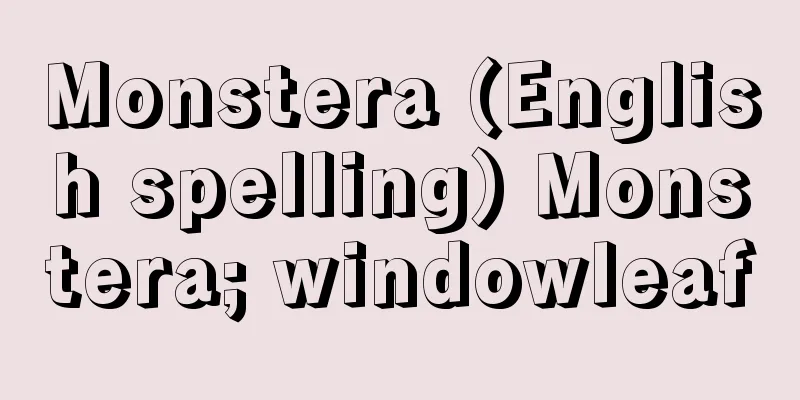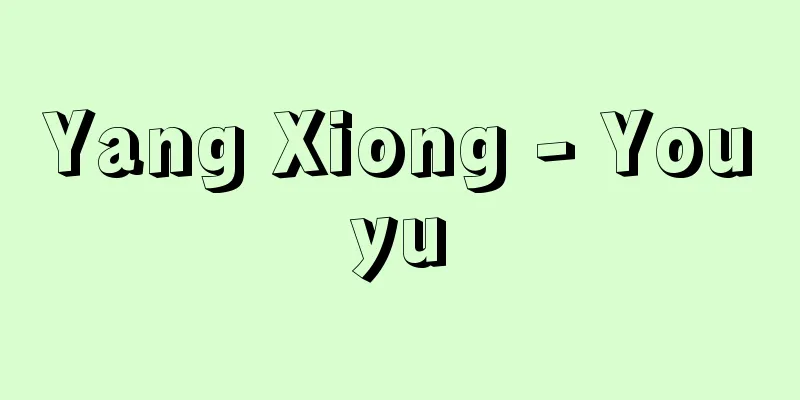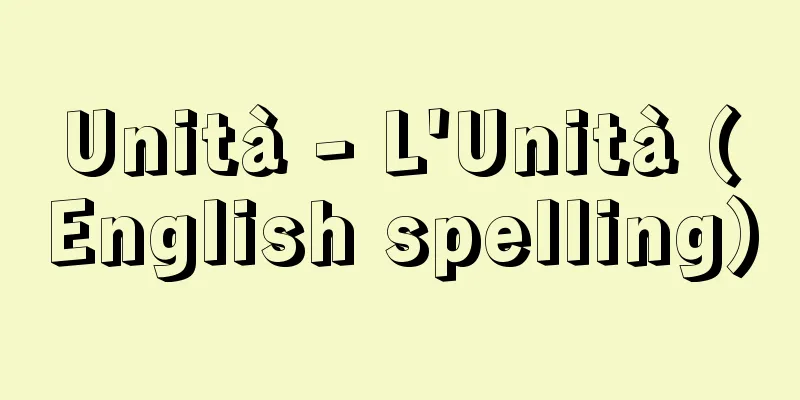Normal school - Shihan Gakko

|
A school whose sole purpose is to train primary school teachers. [Tsubura Kiyoji] historyIn the mid-19th century, with the establishment of the national general education system in Western countries, a large number of teachers were needed to directly carry out this education, and normal schools were established to train them. They were called normal schools in the United States, Écoles Normales in France, training schools in the UK, and Rheeminaires in Prussia (Germany). The word "normal school" comes from the Latin "norma," which originally meant a carpenter's ruler and signified a model, example, or law. In other words, they were schools that taught the model or law of teaching (teaching methods). In Japan, the first normal school was established in Tokyo in 1872 (Meiji 5), and the American teacher Scott Marion McCarrell Scott (1843-1922) was invited to teach elementary school teaching methods. Gradually, normal schools spread to other prefectures. Then, in 1886, under the leadership of Mori Arinori, the first Minister of Education, the Normal School Act was enacted, and the outline of normal school education, which aimed to cultivate the three qualities of obedience, faith, and dignity, was largely established. Later, in 1907 (Meiji 40), in addition to the first course (four-year course) for students who had completed higher elementary school, a second course (one-year course) for students who had graduated from a junior high school or a girls' high school was established. In 1931 (Showa 6), this was extended to two years, and the principle was changed to one in which the first and second courses should be established side by side. In 1943, normal schools became educational institutions equivalent to professional schools, and were changed from prefectural to national. In addition, the Youth School Teacher Training Institute was established in 1935 (renamed the Youth Normal School in 1940). [Tsubura Kiyoji] Basic personalityThe normal schools of the aforementioned countries, including Japan, share common characteristics. In terms of educational organization, they were (1) secondary school-level educational institutions with the qualification for admission being completion of elementary school, (2) a tuition-free/stipend system with a compensatory service system (obligation to work at an elementary school within the jurisdiction for a certain period after graduation), and (3) a boarding school system in which all students lived in dormitories (formality and rules governed under the strict supervision of a dormitory supervisor, promoting a lack of individuality and uniformity). In Japan, these were already determined under the aforementioned Normal School Act. In terms of educational content, emphasis was placed on (1) familiarity with the content of the subjects to be taught in the future, (2) teaching methods and student management methods for those subjects, and (3) teaching practice to actually train in these skills. Summarizing the above, the basic characteristics of normal schools can be described as follows: [1] Singleness of purpose Normal schools were schools whose sole purpose was to train teachers, and moreover, they were schools with a very limited purpose of training only elementary school teachers. Even in Japan, the purpose of normal schools was clearly defined as "to train elementary school teachers" (Article 33 of the 1880 revised Education Act). [2] Closed system Normal schools accepted students who had completed elementary school, provided them with a relatively short training period, and sent them out to work as elementary school teachers. As such, they were schools affiliated with elementary education. In Japan, the "School System" (1872) had already adopted a policy of separating normal schools from the general school system. [3] Teaching skills and a sense of mission In normal schools, teaching methods for elementary subjects and a sense of mission to devote oneself to elementary education were emphasized and cultivated. It can be said that the core of normal school education was excellent teaching techniques and a strong sense of mission in the teaching profession, supported by the unity of purpose and character development mentioned above. [Tsubura Kiyoji] Evaluation of Teacher Education at Normal SchoolsIn 1949, normal schools were reorganized into national universities of education and faculties, and closed around 1950. About half a century has passed since then, and universities of education and faculties are facing major problems amid reforms such as the incorporation of national universities into independent administrative institutions. There are plans to reorganize and integrate universities of education and faculties, and the issue of how to inherit and develop the traditions of normal school education, which have promoted the development of general education for the people in the region, will be a topic of renewed consideration. When aiming to "develop teachers as teaching professionals" (Ministry of Education, Culture, Sports, Science and Technology, "21st Century Education Rebirth Plan," 2001), the aforementioned characteristics of normal school education, namely, the education of expertise supported by excellent teaching skills and a strong sense of mission in the teaching profession, will be useful. [Tsubura Kiyoji] "The History of Teachers" by Karasawa Tomitaro (1955, Sobunsha)" ▽ "Research on Teacher Training" edited by Nakajima Taro (1961, Daiichi Hoki Publishing)" ▽ "The History and Structure of Teacher Training" edited by Nakauchi Toshio and Kawai Akira (1974, Meiji Tosho Publishing)" ▽ "School History Volume 5: The History of Teacher Training" edited by Shinoda Hiroshi and Tezuka Takehiko (1979, Daiichi Hoki Publishing)" ▽ "Research on the History of Teacher Training in Modern Japan - The Process of Establishing Educator Spirituality" by Mizuhara Katsutoshi (1990, Kazama Shobo)" ▽ "The Structure of the History of Japanese Normal School Education - An Analysis from Regional Histories" by Miyoshi Nobuhiro (1991, Toyokan Publishing)" ▽ "The Progress of Education in Japan - In Search of an Image of a Teacher Living in the Modern Age" Revised Edition by Kageyama Noboru (1995, Yuhikaku)" ▽ "Teacher training in times of change: Report of the Japan Society for the Study of Education's research topic "Teacher training and education faculties in a time of declining child population" (1998, Dojidai-sha)" "Historical sociology of teachers: The hierarchical structure of secondary school teachers before the war" by Hiroyuki Yamada (2002, Koyo-shobo) [Reference items] | |Source: Shogakukan Encyclopedia Nipponica About Encyclopedia Nipponica Information | Legend |
|
もっぱら初等学校教員の養成を目的とした学校。 [津布楽喜代治] 歴史19世紀中葉に欧米諸国において国民普通教育制度の成立とともに、その直接的な担い手として大量の教員が必要となり、これを養成する学校として師範学校が設立された。アメリカではノーマル・スクール、フランスではエコール・ノルマル、イギリスではトレーニング・スクール、プロイセン(ドイツ)ではレーラーゼミナールとよばれていた。ノーマル・スクールはラテン語のノルマに由来するが、そもそも大工のかね尺の意であり、型、模範、法則を意味した。つまり、教授の型ないし法則(教授法)を教える学校であった。 日本では、1872年(明治5)に東京に師範学校が設けられ、アメリカ人教師スコットMarion McCarrell Scott(1843―1922)を招いて小学教授法を教えたのが最初であり、徐々に他の府県にも師範学校が広がった。そして86年に、初代文部大臣森有礼(ありのり)のもとで師範学校令が制定され、順良、信愛、威重(いちょう)の3気質を目標とする師範学校教育の輪郭がほぼ整備された。その後1907年(明治40)に、それまでの高等小学校修了者を入学させる本科一部(4年制)のほかに、中学校・高等女学校の卒業者を入学させる本科二部(1年制)が設けられ、31年(昭和6)にこれが2年に延長され、一部・二部併置を原則とすることに改められた。さらに43年には専門学校と同程度の教育機関となり、府県立から官立に改められた。また、1935年に青年学校教員養成所が設けられた(1940年に青年師範学校と改称)。 [津布楽喜代治] 基本的性格日本も含めて、前述の諸国の師範学校には共通の特徴がみられる。教育組織面では、(1)初等学校修了を入学資格とする中等学校レベルの教育機関、(2)無月謝・給費制とその代償措置としての服務義務制(卒業後一定年限、管内の初等学校に奉職する義務)、(3)全員入寮の寄宿舎制(舎監の厳しい監督のもとで形式と規則が支配し没個性化・画一化を助長)などである。日本では、前述の師範学校令のもとで、これらのことがすでに定められていた。教育内容面では、(1)将来教える教科内容への精通、(2)その教科の教授法と生徒管理法、(3)これらを実際に訓練する教育実習に力点が置かれた。以上のことを整理してみると、師範学校の基本的性格は次のように描くことができる。 〔1〕目的の単一性 師範学校は教員養成を唯一の目的とする学校であり、しかも、もっぱら初等教員を養成するというきわめて限定された目的学校であった。日本でも、師範学校の目的は「小学校教員ヲ養成センカ為(ため)ニ」(1880年改正教育令33条)と明定されていた。 〔2〕閉鎖制 師範学校は初等学校修了者を入学させ、比較的短期の養成を施して初等学校の教員として送り出したのであり、初等教育系統の学校であった。日本でも、すでに「学制」(1872)において、一般学校体系から分離して特設する方針がとられていた。 〔3〕教授技術と使命感 師範学校では、初等教科の教授法と初等教育に献身する使命感が強調され、涵養(かんよう)された。 以上の目的の単一性や人物養成に支えられた優れた教授技術と教職への強い使命感が師範学校教育の核心をなしていたといえる。 [津布楽喜代治] 師範学校教育の評価師範学校は1949年(昭和24)から国立の教育大学・学部等に改編され、50年ごろその幕を閉じた。それから約半世紀を経て、国立大学の独立行政法人化等の改革のなかで、教育大学・学部は大きな問題に直面している。教育大学・学部の再編統合が計画されているが、地域の国民普通教育の発展を推進してきた師範学校教育の伝統をどのように継承発展させていくかが改めて検討課題とされよう。「教えるプロとしての教師の育成」(文部科学省「21世紀教育新生プラン」2001年)を目ざすとき、前述のような師範学校教育の特色、すなわち優れた教授技術と教職への強い使命感に支えられた専門性の教育は参考になるであろう。 [津布楽喜代治] 『唐澤富太郎著『教師の歴史』(1955・創文社)』▽『中島太郎編『教員養成の研究』(1961・第一法規出版)』▽『中内敏夫・川合章編『教員養成の歴史と構造』(1974・明治図書出版)』▽『篠田弘・手塚武彦編『学校の歴史第5巻 教員養成の歴史』(1979・第一法規出版)』▽『水原克敏著『近代日本教員養成史研究――教育者精神主義の確立過程』(1990・風間書房)』▽『三好信浩著『日本師範教育史の構造――地域実態史からの解析』(1991・東洋館出版社)』▽『影山昇著『日本の教育の歩み――現代に生きる教師像を求めて』増補版(1995・有斐閣)』▽『浦野東洋一・羽田貴史編『変動期の教員養成――日本教育学会課題研究「子ども人口減少期における教員養成及び教育学部問題」報告書』(1998・同時代社)』▽『山田浩之著『教師の歴史社会学――戦前における中等教員の階層構造』(2002・晃洋書房)』 [参照項目] | |出典 小学館 日本大百科全書(ニッポニカ)日本大百科全書(ニッポニカ)について 情報 | 凡例 |
<<: Ground Survey - Jibanchosa
>>: Ground improvement - Jibankairyo
Recommend
Ako - Ako
An evergreen tall tree of the family Moraceae (AP...
"Kyoraikotomondou" - Kyoraikotomondou
...This book is a controversial response to quest...
Owa - Owa
The Japanese era name (nengo). It was the era name...
Onahama
A port town facing the Pacific Ocean in the southe...
Soot mold - soot mold
A disease in which black mold such as ascochyta gr...
Public Affairs Department - Kujikata
〘Noun〙① In the Edo period, the affairs related to ...
Ami-melon - Ami-melon
...In Japan, it refers to three varieties of West...
Vaccinium praestans
… [Kei Yamazaki]. … *Some of the terminology that...
Child - Chigo
The word's origin is from the word chigo (inf...
Iiyama [city] - Iiyama
A city in northeastern Nagano Prefecture. It was i...
Chloroquine Retinopathy - Chloroquine Retinopathy
Chloroquine retinopathy is an eye disorder caused ...
Furukawa Co., Ltd. - Furukawa Co., Ltd.
The core company of the Furukawa Group, whose main...
Solubility - yokaido (English spelling) solubility
Generally, when a solute dissolves in a particula...
Azabu
A district in the central-west of Minato Ward, To...
Dolet, E. (English spelling) DoletE
...But printers, who were also carriers of new id...









